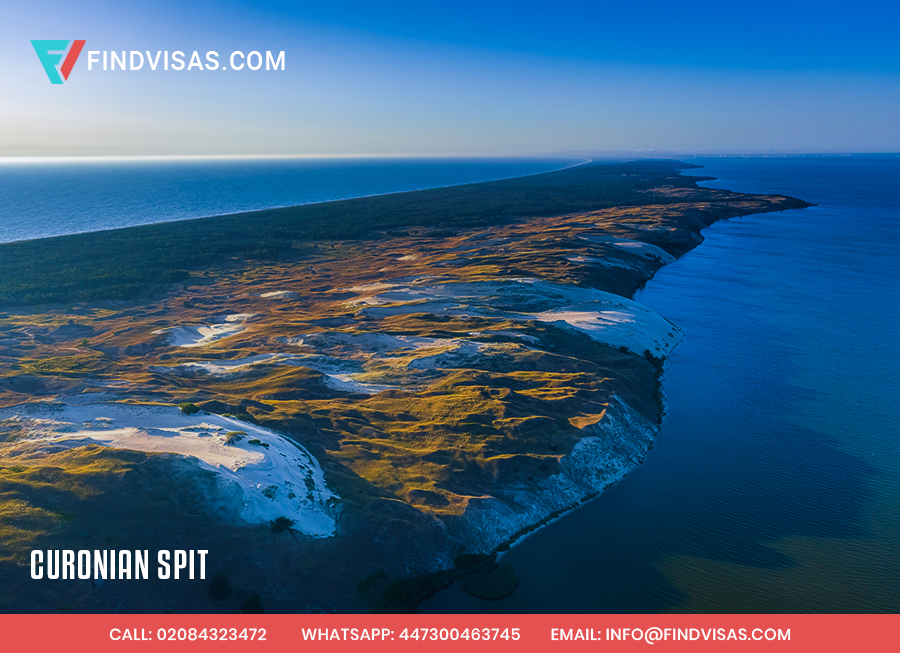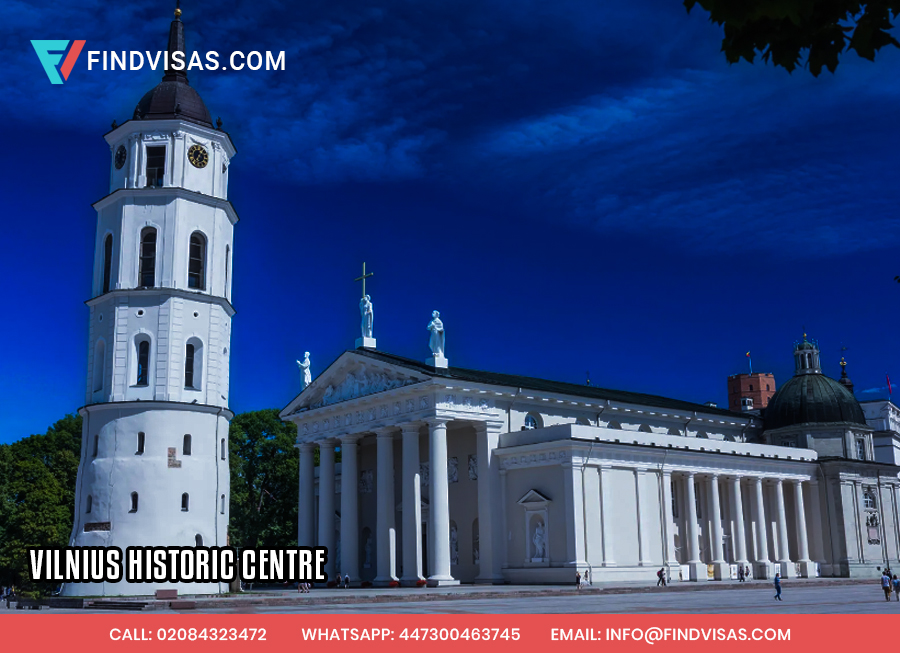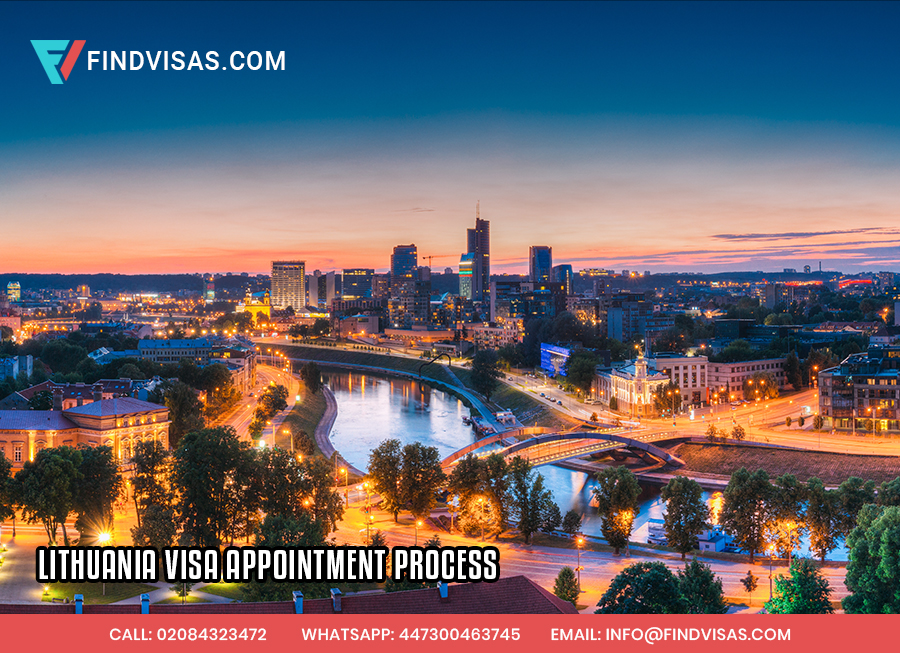Lithuania is home to some genuinely stunning places that are just waiting to be explored by anyone prepared to travel to off-beaten places. There are several places to explore here that have also been considered for recognition by UNESCO. It is full of unique experiences and hidden gems that will make your trip to this Baltic region unforgettable. However, in order to explore these places, you first need to Apply Online Lithuania Visa.
Lithuania is home to four UNESCO World Heritage Sites. Three of these sites are included in the cultural category.
- Curonian Spit
- Kernavė Archaeological Site (Cultural Reserve of Kernavė)
- Struve Geodetic Arc
- Vilnius Historic Centre
Top places for you to explore in Lithuania:
1. Kernavė Archaeological Site (Kernavė Cultural Reserve)
The Kernav Archaeological Site sometimes referred to as the Kernav Cultural Reserve, is a UNESCO World Heritage Site that is situated in Lithuania. This amazing Site has the ruins of a former medieval village and a number of hill forts from the 13th century. It is incredibly significant both historically and culturally.
Kernav Historical Site, nestled away in beautiful settings and home to well-preserved remnants of fortifications, dwellings, and other historical treasures, offers a fascinating view into the rich history of the region. The place serves as a reminder of the strategic importance of Kernav throughout history. You also get the very rare opportunity to explore the ruins of this bustling medieval community.
2. Curonian Spit

A short strip of land that runs for around 98 kilometers along the Baltic Sea coast makes up this unusual and beautiful environment. The Spit is distinguished by its towering dunes, luxuriant woods, and tranquil lagoons. Many different plant and animal species, some of which are uncommon or endangered, depend on it as a vital refuge.
With its historic fishing communities and distinctive architectural styles, the region is also rich in cultural history. You may discover the breathtaking natural splendor and observe how nature and human communities interact peacefully on the Curonian Spit.
3. Struve Geodetic Arc
This arc is made up of a series of survey triangulations that span 2,820 km and ten nations, including Lithuania. Friedrich Georg Wilhelm von Struve and a group of scientists established it in the 19th century in order to precisely calculate the size and shape of the Earth.
Several measurement stations along Lithuania’s Struve Geodetic Arc are indicated by stone pillars strewn over the varied terrain of the nation. These sites add to our understanding of the form and size of the Earth and serve as a testimony to the groundbreaking geodesic work.
4. Vilnius Historic Centre

Vilnius is recognized for its rich cultural legacy and well-maintained medieval buildings. The historic district features narrow, labyrinth cobblestone streets, adorable squares, and magnificent Gothic, Baroque, and Renaissance structures.
Famous sights in the region include Gediminas Castle Tower and the renowned Vilnius Cathedral. Explore the thriving Old Town, which is home to a lot of churches, museums, and bustling cafes. Those interested in learning more about Lithuania’s past will find the Vilnius Historical Centre to be an enthralling destination.
5. Hill of Crosses
Many people travel from all over the world to this place of devotion. There is a huge open area that is covered with greenery. This place is actually situated in Lithuania’s northern region. Crosses and crucifixes are the major attractions of these places. You will also see a statue of the Virgin Mary here.
6. Trakai Island Castle
It is an island in the Trakai region. The castle is made up of stone, and its construction began in the 14th century. The primary architect of this castle was Kestutis. You must see this castle while in Lithuania.
7. Curonian Spit National Park
In terms of tourism, the entire Lithuania has something interesting to offer. The Baltic Sea’s saltwater and Kurshsky Bay’s freshwater both wash over this national park. The vibrant colors of the dunes are simply stunning. The combination of fir and birch woodlands is gathered here.
Both regular visitors and those who love real nature will be inspired by the charm of the local plants and the distinctiveness of the geographic scene. Ecotourism is quite common here. Come to this park to breathe fresh air, enjoy the untainted wildlife beauty, and revive your soul.
8. Amber Museum in Palanga
It is a unique museum that colorfully tells the history of the “sunstone.” Visiting the walls of this attraction, you can plunge into the bright colors of the stone fairy tale. Once you cross the threshold of the museum, you encounter a unique collection of amber. See the “live” beauty of the stone, feel the attraction of amber, and listen to the fascinating stories about mining Lithuanian “gold” – all this is offered during a visit to the museum.
Here, you also get to know about the life of the founder of Palanga – Earl Tyshkevich. After visiting the museum, you can take a walk in the park near the palace.
9. Witches Mountain
The sights of Lithuania are not only stunningly beautiful but also mysterious. The Curonian Spit region is home to this mysterious area. A lovely dune with a parabolic shape serves as a representation of Witches Mountain. Surrounding this incredible sight are enigmatic rumors and intriguing stories.
You can actually sense the mysterious energy of the mountain as you go around it. You may see why it is believed that the mountain is split between light and dark energies if you are able to observe it from a distance. The elevation is separated into two colors visually. The mountain is lighter on one side than the other.
10. Druskininkai town
Magnificent pine woods, expansive sandy beaches, an emerald sea, historic farmhouses, restful relaxation, and efficient treatment are all features of Resort Lithuania. Even while spa towns don’t always have sunny, warm days, the nearby sea air combined with the aroma of pine is quite pleasant and beneficial. Druskininkai is among the most famous and well-liked balneological resorts in the nation.
Numerous mineral springs are used as the foundation for the operations of nearby balneotherapeutic facilities. Local soils are renowned for producing medicinal peat muds that are used for the treatment of a variety of ailments, in addition to waters that have varying levels of mineralization.
So, if you are planning to visit Lithuania, you must be aware that you will have to Lithuania Visa from UK to be able to explore the unique attractions of the country. So here is your handy guide to apply for the same:
Lithuania Visa Appointment Process

The first and foremost thing that you need to do is schedule a Lithuania Schengen Visa Appointment, which will then lead to a successful application for your visa.
- Head to Lithuania visa; click on apply now.
- Complete the online Lithuania visa form with all your details.
- Make sure to fill in all the required details, submit the form, and pay the nominal fee.
- Please sit back and relax while our Lithuania visa appointment experts do the further process. They will book the appointment for you.
- With our years of expertise, we help you obtain your express visa appointment within 24-48 hours.
- One of our experts will get in touch with you and guide you with the required documents that you need to carry along with you on the day of your appointment at the VFS visa center.
- When you visit the visa center, make sure you carry all the documents as discussed with our team member.
- Pay your visa fees and proceed with providing your biometric information like fingerprint and digital photo.
- You will receive your passport and visa within 10-12 working days directly through mail once it gets approved.
Documents Requirement for Successful Lithuania Visa Appointment
To get an appointment and apply for a Lithuania Visa, you will need to provide the following documents:
1. A valid passport must be:
- Issued within the last ten years
- Must have 2 full blank pages for the Lithuania visa stamp.
- And it must be valid for at least 3 months after you come back to the UK from Lithuania.
2. A valid residence permit issued in the UK.
3. Passport format picture with the following specifications:
- Not more than 6 months old.
- 35x45mm size
- The pictures must be in colour with a white background.
- You must submit identical photos.
4. A cover letter with the reason for visiting Lithuania.
5. Documentation of your travel arrangements, such as a detailed itinerary and round-trip flight reservation.
6. Health insurance that will pay for any emergency medical expenses across the Schengen area.
7. A letter of invitation from a host in Lithuania along with a copy of his or her passport or proof of reservation of the hotel where you will be staying during your holidays.
8. A recent bank statement that shows you have enough money to cover all the expenses associated with your Lithuania visa application.
FAQ’s
Q. How long does it take to get Lithuania tourist visa?
A. Once you submit your visa application with all the required documents, it generally takes around 10-12 working days to process. But remember that this time frame is simply an estimate, and processing times may vary based on your specific visa type and duration of stay. Applying for your visa well in advance is always a smart idea & highly recommended by us to prevent last-minute problems and delays.
Q. How early should I apply for Lithuania visa?
A. There are some rules and regulations about the earliest and latest times at which you may apply for a Lithuania visa from UK. You can apply for your visa three months before you want to travel, according to the Schengen visa Rules. The final time you may apply is two weeks before you go to Lithuania or any other Schengen nation.
Q. After paying for a Lithuania visa online, how can I be sure that my appointment has been confirmed?
A. Lithuania Visa Online application with Find Visas is absolutely reliable, and after the payment is made, you will get payment confirmation in your email and the appointment confirmation after the appointment request is approved, which generally happens within 24-48 hours.
Q. Why choose findvisas.com?
A. We will schedule your Lithuania Visa Appointment at the VFS Visa Centre.
- We will schedule your appointment at the VFS visa center that is closest to you.
- We will provide you with the list of documentation needed for a successful application.
- Professional guidance in case of any complications.
- We manage your applications efficiently & smoothly.
- Your documents are always secure & protected with us.
- You get round-the-clock support.
Q. Will my visa be valid for Lithuania only?
A. No, according to Schengen visa rules and regulations, your visa will be valid for other Schengen member states as well.
